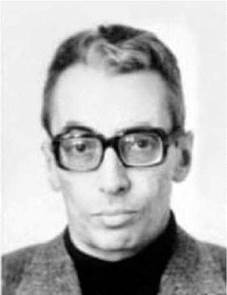1958 PROPOSALS FOR MOON ROCKETS
Taking advantage of the public reaction, Korolev set new tasks for Mikhail Tikhon- ravov and his ‘planning department for the development of space apparatus’. Korolev had first raised the idea of lunar exploration with government as far back as a meeting on 30th April 1955, but nothing had come of it. Now the climate was quite different. Popular enthusiasm for spaceflight had reignited in a surge of public interest reminiscent of the glorious 1920s and early 1930s. Three design groups were set up: one for a manned spacecraft, one for communications satellites and one for automatic lunar spacecraft. The lunar group was put under the charge of a brilliant young designer, then only 30 years old, Gleb Yuri Maksimov (1926-2000).
Based on discussions with him, on 28th January 1958, Tikhonravov and Korolev sent a letter to the Central Committee of the Communist Party of the Soviet Union and the government called On the launches of rockets to the moon (sometimes also translated as A programme for the investigation of the moon). This proposed that two
|
Gleb Yuri Maksimov |
spacecraft be sent to the moon. One would hit the moon, while the other would take photographs of its hidden far side and transmit them to the Earth by television. The impacting probe would signify its arrival either by the cessation of its telemetry signal, or through the igniting of explosives, which could be seen from the Earth. The government agreed to the proposal within two months, on 20th March 1958. Contrary to Western impressions that Soviet spaceshots were ordered up by the political leadership, the opposite is true. Most of the early Soviet space missions resulted from proposals by the engineers, convincing government of the political and publicity advantages.
Tikhonravov and Korolev followed this with a grander plan for space exploration that summer. Called Most promising works in the development of outer space, this was an audacious plan outlining a vast programme of space exploration – variations of this title have also appeared (e. g., Preliminary considerations for the prospects of the mastery of outer space), probably a function of translation. None of this was evident in the West – indeed, details of Most promising works in the development of outer space were not published until decades later. Yet, the plan outlined, at this extraordinarily early stage, how the Soviet Union was to conquer the cosmos. This was what they proposed:
• Small research station of 15 to 20 kg to land on the moon.
• Satellite to photograph the lunar surface.
• Upgrade the R-7 launcher to four stages to send a probe to orbit the moon and return films to Earth.
• Send robotic spacecraft to Mars and Venus.
• Develop Earth orbit rendezvous.
• Manned spacecraft for flight around the moon.
• Eventually, manned flights to the moon, Venus and Mars.
• Goal of permanent colony on the moon.
• Development of the critical path technologies for rendezvous, life support systems and long-distance communications.
Now Maksimov’s group soon came up with its first set of detailed designs. Four types of spacecraft were proposed. They were called the Ye or E series, after the sixth letter in the Russian alphabet (the first five had already been assigned to other projects). These are shown in Table 2.1.
These plans were soon modified. The Ye-4 probe was the problem one. Nuclear experts warned that a nuclear explosion on the moon would, without an atmosphere there, be difficult to observe and that the visibility of even a conventional explosion was uncertain, so this probe was dropped. The engineers also worried about how to track a small spacecraft en route to the moon. They came up with the idea of fitting 1 kg of sodium or barium to be released during the journey. This would create a cloud of particles that could be spotted by the right sensors. Once the moon had been hit (Ye-1), they would move quickly on to farside photography missions (Ye-2, 3).
|
Table 2.1. Plans for first generation of Soviet moon probes, OKB-1, spring 1958.
|











